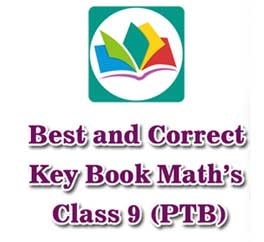Technology trends in Education in 2021
Today, the trend of E-learning is flourishing as its demand is evident in every sector of life. A few years ago, attending a lecture, seminar or workshop was an adventure for employees and students. But now, people prefer avoiding mass events and prefer managing the training and learning online. E-learning delivers lectures via electronic devices; It is implemented both in student education and employee training. PCs, tablets, laptops, pads, mobile phones all are used for information delivery. These tools facilitate the learning process and assist the educators.
Before 2020, the world enjoyed connectivity and comfort in the revolutionary era while indulging in futuristic planning. But then appeared the big jolt of Covid-19, snatching peoples luxury, pushing them into the whirlwind of chaos by rattling the entire ecosystem. Tossing the world upside down, this unstoppable pandemic in the literal sense dismantled every aspect of life.
Once this storm started settling, the world began to stand on its feet again. Amidst this gloom and doom, technological innovations aided in quickening the recovery by bringing in hope, especially for the students and employees. People held onto the distance learning bandwagon, from medical students to management studies, kindergarteners to high school goers, everyone scurred online to save their academic year from going waste. All the futuristic setups such as technological teaching frameworks, virtual classroom models, high-end learning systems etc., were implemented, immediately turning the virtual learning system into overnight reality.
Greater student engagement, higher academic performance, and better learning outcomes are all that we get with e-learning, so instead of being passive regarding involvement in a lesson, students can continuously interact with peers and teachers. They can pass quizzes, play games, create visual elements online. They can get new information effectively and quickly. As you see, e-learning provides the students with a collaborative and interactive environment.
In the past, scientific software developers talked about the Internet of things and machine learning. Today, these technologies have become a significant part of distance learning strategy and knowledge acquisition. In the back-end of already implemented solutions, we now observe something new, i.e., novel trends in educational technology holding stronger foundations and promoting proper student-centred learning. These trends allow a higher level of connectivity and engagement, emphasizing versatility and collaboration. We will be figuring it out all in this article.
Salient is how technology helped us in all sorts of matters unquestionably for tackling the disruption of covid-19. We have realized the importance of leveraging advanced technology, enabling us to gain strategic advantages in all walks of life. Thanks to the change with these unprecedented changes.
Below we are bringing you the top trends in technology, facilitating a smooth educational pathway :
Blended learning:
Blended learning is the approach to learning combining face-to-face or online learning experiences. Ideally, it compliments each other by using its particular strength of strategically designed package for the web-based virtual one-to-one learning experience.
In the present course of Education, blended or hybrid learning is a relatively new yet striking tool, and not all professors use it in the same way. Instead, professors in the composite learning systems use the course management system application to connect with students effectively. Moodle and blackboard are two well-known LMS applications used but are supplemented by cloud-based content and learning management systems. Students can access lecture videos, track progress and assignments, interact with peers and professors, and review other supporting materials like scholarly articles and powerpoint presentations through these platforms. Even using the same platform, professors can integrate different classrooms differently.
AI-Enabled Education
This branch of computer science simulates human intelligence using computer softwares and machines, including the performance of tasks requiring average human intelligence, e.g., decision making, object detection, complex problem solving (like high-level computation performance, prediction accuracy, fraud detection etc.).
AI automizes different processes, making learning less effort-consuming and more pleasant. One can see the pros of AI from both teacher's and student's perspectives. When it comes to the latter, AI assists students when even teachers are busy. They can get answers to their questions without bothering someone else. They can overview their performance and clarify instructions, and can access vast amounts of data.
For teachers, AI can assist by taking responsibility for extra tasks, pleasantly reducing efforts devoted to living interaction. Moreover, teachers do not have to analyze the performance of individual students. Instead, they can get alerts about recent changes or tendencies automatically. The AI-powered chatbot technology can also be adjusted according to teacher's interests and goals, allowing students to check their schedules. More than that, the educators may implement voice assistance to answer the questions of first-year students.
Artificial Intelligence (AI) covers a wide range of areas, including autonomous robotics, cognitive science or engineering practices, machine learning and a variety of other impressive fields of knowledge. AI enables the computer systems and other related devices to adapt and perceive in respective environments. Hence using software algorithms, these devices perform tasks that otherwise would require human intelligence.
For example, the optimized autonomous artificially intelligent machines sense their environments, think, learn and respond on their way by recognizing and interpreting the digitized text, interpreting sound and images, making it possible to suggest solutions by diagnosing problems and giving an optimized response.
Personalized learning is the bright point while focusing on the link between artificial intelligence and Education. You will be wondering how! When the users use the IoT (Internet of Things) devices and other digital tools to connect, the process helps gather the data on each individual. This data is further analyzed, and the information is extracted for developing customized learning.
Researches have proved that Artificial Intelligence drives efficiency, personalize and streamline the admin tasks to allow teachers the freedom and time to provide good adaptability and understanding uniquely.
Gamified learning:
Now the learning process is no more boring. People's attitude toward earning has changed. Learning is now engaging, fun and interactive. Gamified learning is a piece of crucial evidence for this tendency. It presupposes the incorporation of gaming elements into the learning process.
Two main gamification types are content and structural gamification. A common advantage of which is that the learner enjoys gaining knowledge and enjoying the game's process. They can also practice their desired skills and check their performance along. This type of learning is not confined to children; instead, it is a common misconception that gamified learning is suitable only for kids. Now the more refined complex versions of learning games are out there, which are helpful for adults to enhance their knowledge and sharpness, bringing benefit at big ratio.
Gamification significantly impacts self-education and socialized learning in a competitive environment, forming positive social and behavioural patterns. It is all about the positive impression of the lesson.
Example: Mompreneur is an ultimate business strategy board game, which brings entrepreneurial experience to enhance your skills in entrepreneurship.
STEAM learning:
STEAM is an abbreviation for "Science, technology, engineering, art and mathematics". It is a well-trending method of learning, and its demand will be manifold in future as these kinds of project-based learning experience enhance critical thinking, creativity and develops the problem-solving skills.
STEAM learning has an inclusive approach providing a hands-on learning experience. It also helps to recognize the importance of understanding art and relevant correlation with engineering, mathematics and technology.
Immersive Education AR and VR:
Virtual reality and Augmented Reality (VR and AR) are current trends in Educational Technology, forming the ground for experiential learning. Using these powerful tools inside and outside classrooms, they can see the process of learning as an excellent and entertaining thing.
Virtual reality allows the students or users to immerse themselves into artificially constructed reality. Augmented reality provides the learners with a facilitated view of objects as it is an immersive learning tool. Sometimes, the students cannot understand the complicated definitions of complex subjects. They can not imagine understanding related concepts without the visual representation; experimental display from AR and VR comes in handy in such situations, allowing them to understand abstract notions.
Online Classrooms
In the middle of all confusion and chaos the coronavirus brought, which urged us all into quarantine and prompted the world to a standstill, the online classes played a substantially crucial role in maintaining the smoothness of Education in student's lives. Salient is how it has helped us all unquestionably for tackling the disruptions caused by the pandemic. Online classes give leveraging advantages in learning. The EdTech companies have been creating virtual classrooms to upskill the students. Online classrooms are flexible and cost-effective, and these trends evolve, making the education industry tech-savvy.
Learning management system
Learning management systems aids in skill development and delivering the training materials. This system helps in regulatory compliance, e-commerce, extended learning opportunities and safety certification updates. It gauges flexible reporting and analytics for enhancing learning effectiveness by visual representation of learner's data and customized reports, creating better training programs and quickly identifying the patterns adjusting those programs.
Assessment tools in LMS gauge the perspectives of retention and comprehension. It supports a significant ratio of branching scenarios, simulations and exam engines. LMS has innovative scheduling tools regarding face-to-face sessions that accommodate a lot of students at a time. It provides a proper scheduling tool for training sessions. It ensures the accessibility to training compatible with the person's capability, rather than juggling you in multiple tasks.
Another feature of LMS is hosting for maximum security and related protocols to ensure the safety of information. Single-tenant solutions provide flexibility and security while alleviating the risk of a data breach.
Asynchronous learning
An essential feature for improving engagement and knowledge retention is asynchronous learning, which means that you do not have to be present at a specified time for a lecture or webinar; instead, the online messaging, combining videos and questioning forums enables material engagement at an optimized and desired pace, hence helping in promoting buy-in and improve return, i.e., LearnUpon, Grovo etc.
Video conferencing
The video conferencing features of today's innovative softwares are amazing plus points for the students who feel feasible with one-to-one attention.
Examples: eFront, eloomi, Skype, Zoom.
E-commerce and subscriptions:
These softwares provide channels for content publishing to the broader audience, so you can monetize the gate learning content in quite a beneficial way. In addition, the subscription courses are an excellent way for income recurrence using strategic collective intelligence.
Examples: Docebo, latitude learning.
Mobile learning
Using native LMS mobile apps or responsive designs, learners become capable of getting the training from different locations using any device having a sound internet connection, which is helpful in learning other than the workdays or for the distributed teams where learning takes place between visits or calls.
Examples: Litmos LMS, Cornerstone LMS.
The use of big data:
Big data is the terminology used for managing large and hard volumes of data (both structured and unstructured), inundating businesses on a day to day basis. It is related to insights, leading to better decisions and strategic business moves.
Almost 7000 million connected devices share information over the Internet. This figure will be rising up to 20,000 million in 2025. Big data converts it into the information that is transforming the world. In short, big data empowers the big volume processing into personalized learning.
Suppose you have to evaluate the participants in some task; you gather information about their input and add the received points calculating the average time period. But this won't be calculating the results precisely, so in order to get the full picture, you can click on the particular point of the graph and will be able to see the input of participants received on the given day or month.
Big data allows better customer retention and can be analyzed for insights that lead to better decisions and strategic business moves. It is pertinent to analyzing and managing the bulk data to identify patterns in the chaos of explosion in information for designing smart solutions. It is used in areas as diverse as agriculture, environmental studies, medicine, engineering etc.
It has been used in an industrial circle to provide insights for transparent simpler products, by predicting and analyzing customer behaviour through derived data from GPS-enabled devices, social media and CCTV footage.
What if sharp drops are observed in productivity in starting of the year or a sharp rise in mid of the year in your business? These tendencies can not be a mere coincidence. Did these drops happen at the time when new strategical methods were followed? or what if these changes reflect the mental state of the pupil/employees working. Follow the descriptive and prospective analysis and look for an edh-tech partner having a focus that resonates with that of yours.
For example, Keen Ethics company works with the education industry, helps in developing skill assessment solutions based on formative evaluation, forming the ground for powerful analytics.
Impacting economy:
Technology is the chief determinant of the economic growth of a country, having a profound impact on the societal wellbeing of us all. It incorporates all aspects, including resource allocation to the distribution of knowledge and flow of income. The role of technology is pertinent in every area of the present era. Its sphere edges the lining of the business world as it expeditiously permits maximum productivity for the organizations by aiding a lot of work to be completed in a shorter time span. Enterprise in the technological forum implies that the services are directly proportional to inflating e-commerce business opportunities with cost-effective savings.
Impact of technology in other fields:
Information technology encompasses each and every sector of our economy.
Mentioned below are some fields that own collaborative dependence on technology:
- Education and training :
- Accounting
- Telecommunication
- Cybersecurity and ethical hacking:
- Banking
- Retailing
- Aviation
- Agriculture
- Research
- Telemedicine
- Science and technology:
- Government and public administrations
- Business and management
- Hospitality industry
- Food industry
- Real state industry
- Advertising industry
- Mass communication
- Manufacturing industry:
- Pharmaceutical industry
Conclusion:
Technology sets the students for the burgeoning future by shaping the student's lives, impacting their professional journeys, enhancing their capabilities to hone the hidden skills and analytical smartness. It helps in pursuing a gigantic and multi prolonged strategy that follows the nascent interventions, creating the latest innovative learning environment, helping in harnessing modern educational culture.
The multifaceted cutting-edge technologies, including operating systems, mobile applications, web development, telecommunication systems, application development, all provide integration of foundations for innovative learning, fulfilling the vision of our students, so they can stretch and groom their skills with a smooth sense of delegation.
The enormous power of ed-tech is amazing; nowadays, there are infinite tools to boost up student's motivation by facilitating learning. Big data, gamification, AR/VR, AI are only some of these. But the question is how to implement the most feasible tools in one's particular case. You do not need to worry; there are so many ways to handle it. Adaptiveness and flexibility are bright sides of modern technology.
In past years, we knew that a prominent crest would appear in the e-learning industry market size, and it happened in recent years. In 2021, we know that educational technology will reach the point of 1 trillion dollars in 2027. Sounds impressive, right! E-learning gives you a toolset for processing information. 3D slides, images, video, animations, multi-functional whiteboards, podcasts, and much more. You have to decide yourself what features to choose and implement. And if you are not sure whether to buy an off-the-shelf product or build your e-learning solution, research for a while and decide what to choose.
In order to choose the best option for you, you should clearly understand the anticipated outcomes beforehand. Defining your goals, assessing the available tech tools and keeping the relevant pros and cons under consideration. You may consider education software development services, which can give you a proper solution in a complex way. It will help you in reaching the end product with a clear vision of where to move further.
Mehran Ali
Top Contributors
Related Articles
Samsung Galaxy A56 Leads Trending Smartphones | Oppo Find X8 Ultra Enters Top 10
- Ilmkidunya
- 16/Apr/2025
University of Management and Technology (UMT) – Press Release UMT and Binance Join Forces to Advance Blockchain Education in Pakistan
- Ilmkidunya
- 10/Apr/2025
Starlink Internet in Pakistan: Launch Expected by December 2025, Says IT Ministry
- Ilmkidunya
- 08/Apr/2025








.gif)


































